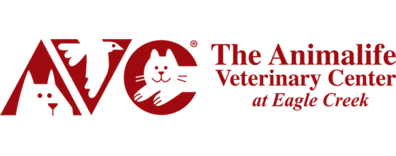Gastric Foreign Objects in our Pets
General

In this installment I will be discussing something that many pet owners have encountered with their pets resulting, for many, in very serious consequences. Unfortunately, with the nature of pets, it can not always be avoided but there are some common sense steps you can take to avoid the traumas and the dramas of, what veterinarians call, Gastric Foreign Bodies- dogs and cats eating stuff that they shouldn’t.
Over my career I have removed countless odd objects from the stomachs and bowels of dogs and cats and it never ceases to amaze me what a pet has thwe capacity to swallow. Unfortunately, just because it can be swallowed does not mean that it can be passed all the way through and pooped out into the yard. Some pets (my Rottweiler Raven comes to mind) seem to have an incredible capacity to pass large objects without difficulty but they are the exception. I used to find odd objects scattered around the yard when cleaning up poop that Raven had eaten and deposited with his normal “number twos”. I have found pieces of tinfoil, fabric, plastic, and an entire sock. I cant recall a single time when he had any difficulty with any of it. However, he was a very large dog and that is probably the only reason he was spared the traumas of surgery to remove the garbage he always seemed to find and eat.
Smaller dogs have much bigger problems and here is a short list of the things I have removed surgically: a hearing aid, batteries, a large collection of rocks, socks, underwear, a shirt (this was in a large snake so I am not sure if it counts), a spoon, a popsicle stick, countless bones, rubber balls, corn cobs, coins, shoelaces, tent cords (when I was a student, the dog had eaten ALL of the cordage from a tent for some reason), cigarette butts, tampons (I know, gross), peach pits, Christmas tree icicles, and children's toys.
I wish I could tell you that all of these had favorable outcomes but that is not the case. There are some that present so critical that pets die in spite of my best efforts and some of these materials are downright toxic. For instance, a cigarette butt contains a huge amount of nicotine and in a small dog it is more than enough to kill them. I am not sure why a dog would eat one but I did have a patient that got into the garbage to get to the chicken bones that had been thrown in there and he ate all of the bones along with an entire ashtray full of butts. He survived the surgery but died of nicotine poisoning. I have seen a dog die from eating a penny due to the toxicity of the penny itself.
The biggest problem for cats is, by far, string. A cat playing with string will start to swallow it then the little fuzzies on the cats tongue will not allow him to spit it out and they swallow the entire thing. As a string gets entangled in the bowel it causes the bowel to try to “climb” the string and can actually cut the bowel as well as cause sections of the bowel to become necrotic. The same thing happened with the dog that ate all the tent string. To remove the string, it is not uncommon to have to make several incisions into the bowel to take the string out in pieces, and we often have to remove large sections of intestine. My fathers cat required surgery to remove a million Christmas tree icicles that the cat must have thought were quite tasty.
As I am writing this I am trying to answer the question that I know some of you must be asking, “So how do I keep my pet from eating stuff?”, and I think it is a fair question. There is no answer that will guarantee that your pet will never swallow a something it shouldn’t, but common sense should help to minimize the risk. These are the things that I believe will keep your pet safer;
Never give them bones to eat as a treat.
Keep your trashcans covered all the time. Especially the ones in the bathroom and kitchen.
Never use icicles on your tree if you have cats.
Don’t use string as a cat toy.
If you have kids, try to watch for small toys left on the ground.
Don’t leave dirty socks and underwear on the floor.
Keep an eye on what is on the ground when you walk your dog.
Don’t let your pets roam freely.
Watch what your kids are handing your pets. (that’s why I had to remove a popsicle stick)
Be careful where you leave fishing tackle. They don’t often swallow lures but I have had to cut many out of dogs and cats mouths. They taste like fish so who can blame them?
If you think your pet actually did swallow something, call your vet immediately. Often, things that they have eaten can be removed by causing the pet to vomit. Not sharp things, but things like socks can often be removed this way. If the pet is acting sick, vomiting, etc, then xrays are needed and possibly surgery so don’t wait too long.
Ultimately it is all about being vigilant. Watch what your pet has access to and treat them like a two year old child. You don’t try to teach an infant not to put things in their mouths. The first thing you do is baby proof your home. Make sure your home is also “pet proof” and hopefully you will never have to face one of those “uh oh” moments as you watch your pet gulp down a hearing aid.
